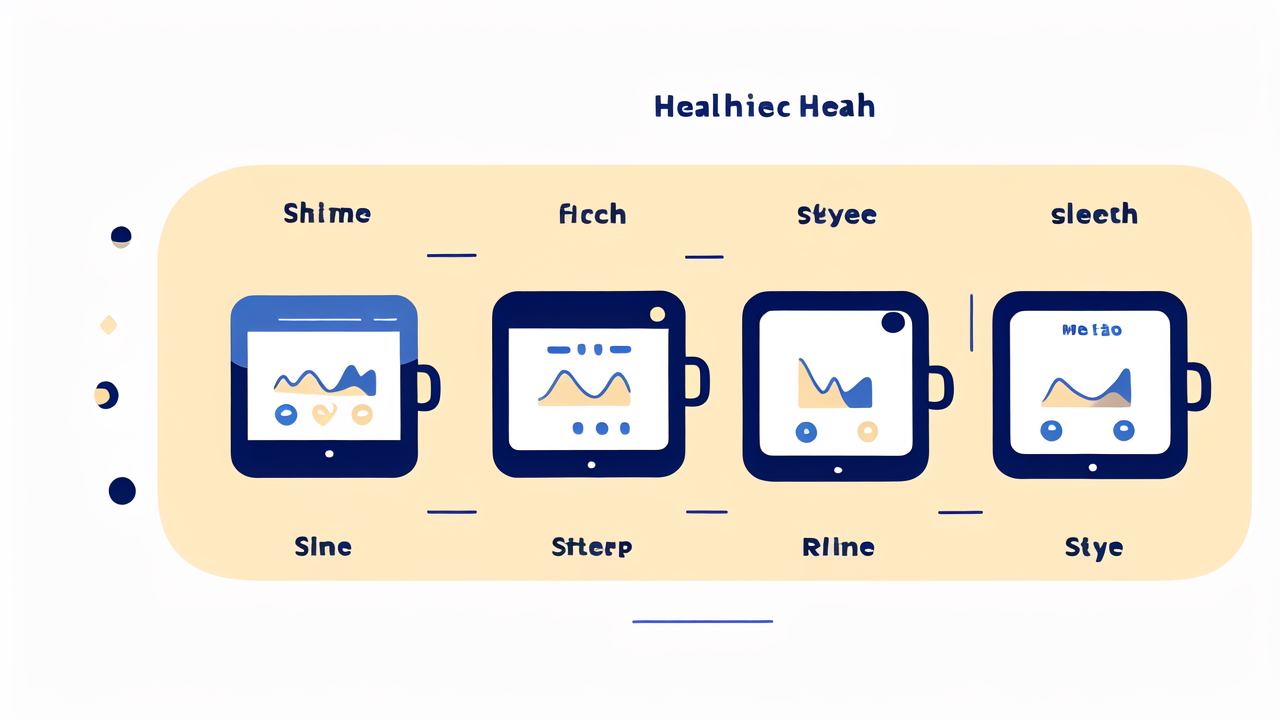The Rise of Smart Watches in the Fashion Industry
A Brief History of Wearable Technology
Wearable tech has come a long way since the early days of Fila watches. These simple timepieces were once the height of fashion. Now, we have smart watches that do much more than tell time.

The journey began with basic digital watches in the 1970s. They could show the time and date. Some even had calculators. As technology advanced, so did wearables. The 1980s saw the first watch with a TV screen.
In the 1990s, wearable computers emerged. They were bulky and not very practical. But they paved the way for today's sleek smart watches. The real breakthrough came in the 2010s with the launch of the Apple Watch.
Today, smart watches are a booming market. They offer features like fitness tracking, heart rate monitoring, and mobile payments. The evolution continues as brands push the boundaries of what's possible on your wrist.
The Fusion of Fashion and Functionality in Modern Smartwatches
Smart watches have become more than just tech gadgets. They're now fashion statements too. Brands are focusing on both looks and features to appeal to a wider audience.
Many luxury watch brands have entered the smart watch market. They bring their design expertise to create stylish devices. These watches blend traditional aesthetics with modern tech.
Customization is a key trend. Users can change watch faces to match their outfits or mood. Some brands offer interchangeable straps for more versatility.
Fashion collaborations are common. Tech companies partner with fashion designers to create unique models. These limited editions often become must-have items for tech and fashion enthusiasts alike.
The result is a diverse range of smart watches. There's something for everyone, from sleek minimalist designs to bold statement pieces. This fusion of fashion and tech has helped smart watches become mainstream accessories.
The Impact of Smart Watches on the Watchmaking Industry
Smart watches have shaken up the traditional watch industry. Many feared they would spell the end for mechanical watches. However, the reality is more complex.
Some traditional watchmakers have embraced smart technology. They've launched their own smart watches or hybrid models. These combine classic watch designs with smart features.
Others have doubled down on craftsmanship and heritage. They focus on high-end mechanical watches as luxury items. These appeal to collectors and those who appreciate traditional watchmaking.
The smart watch boom has also sparked innovation in traditional watches. Brands are incorporating new materials and designs to stay relevant. Some are adding limited smart features without going fully digital.
Overall, smart watches have expanded the watch market. They've attracted new, younger consumers to wrist-worn devices. This has created both challenges and opportunities for the watchmaking industry.
Key Players and Innovations in the U.S. Smart Watch Market
Leading Brands and Their Market Strategies
The U.S. smart watch market is dominated by a few key players. Each has its own strategy to stand out in this competitive field.

Apple leads the pack with its Apple Watch. They focus on seamless integration with iPhones and health features. Their strategy is to be the ultimate iPhone accessory and wellness device.
Samsung is a strong competitor with its Galaxy Watch line. They offer compatibility with both Android and iOS. Their focus is on versatility and advanced health tracking.
Fitbit, now owned by Google, targets the fitness-focused crowd. They emphasize long battery life and in-depth exercise tracking. Their watches are designed to be workout companions.
Garmin caters to serious athletes and outdoor enthusiasts. Their watches offer rugged designs and advanced GPS features. They focus on niche markets like runners, cyclists, and hikers.
Fossil brings fashion expertise to the smart watch world. They offer a wide range of styles under various brand names. Their strategy is to appeal to fashion-conscious consumers.
These brands compete on features, design, and ecosystem integration. Each tries to carve out its own niche in the growing smart watch market.
Technological Innovations Shaping the Future of Smart Watches
Smart watch technology is evolving rapidly. New innovations are constantly emerging to make these devices more useful and powerful.
Health monitoring is a major focus. Watches now offer features like ECG, blood oxygen level monitoring, and stress tracking. Some are even working on non-invasive blood glucose monitoring.
Battery life is improving with new power-efficient chips. Some watches can now last for weeks on a single charge. Solar charging is also becoming more common in high-end models.
Connectivity is expanding beyond Bluetooth and Wi-Fi. Many watches now offer cellular connectivity. This allows them to function independently from smartphones.
Voice assistants are getting smarter. They can now handle more complex tasks directly from the watch. This makes smart watches more useful as standalone devices.
Display technology is advancing too. Flexible and always-on displays are becoming more common. These offer better visibility and new design possibilities.
As technology improves, smart watches are becoming more capable and versatile. They're evolving from simple phone companions to powerful wearable computers.
Consumer Trends Driving the Smart Watch Industry
Consumer preferences are shaping the development of smart watches. Understanding these trends is crucial for brands in this competitive market.
Health and fitness tracking remain top priorities for users. People want devices that can monitor their workouts and overall wellness. This has led to more advanced sensors and health features.
Customization is increasingly important. Users want to personalize their watch faces and features. This trend is driving more flexible software and hardware designs.
Battery life is a key concern. Consumers want watches that can last at least a day, if not longer. This is pushing brands to improve power efficiency and charging speeds.
Privacy is becoming more important to users. They want control over their data and how it's used. This is leading to more transparent data practices and local processing of sensitive information.
Style still matters. While functionality is crucial, users also want watches that look good. This is driving more diverse designs and collaborations with fashion brands.
Ease of use is critical. Consumers want intuitive interfaces and seamless integration with their other devices. This is leading to improved user interfaces and ecosystem compatibility.
These trends are shaping the future of smart watches. Brands that can meet these evolving consumer demands are likely to succeed in this dynamic market.
Regulatory and Ethical Considerations for Smart Watch Brands
Navigating the Regulatory Landscape of Wearable Tech
Smart watch brands face a complex regulatory environment. They must comply with rules covering various aspects of their products.

Data privacy is a major concern. Brands must follow laws like GDPR in Europe and CCPA in California. These regulate how user data is collected, stored, and used.
Health features are subject to medical device regulations. If a watch claims to diagnose or treat conditions, it may need FDA approval in the U.S. Similar rules apply in other countries.
Radio frequency emissions are regulated by bodies like the FCC. Smart watches must meet standards for electromagnetic radiation to ensure user safety.
Consumer protection laws apply to marketing claims. Brands must be careful not to overpromise on features or battery life. False advertising can lead to legal issues.
Environmental regulations affect manufacturing and disposal. Brands must consider e-waste rules and restrictions on hazardous materials.
Navigating these rules is crucial for smart watch brands. Compliance ensures they can operate legally and maintain consumer trust.
Ethical Manufacturing and Sustainability in Smart Watch Production
Ethical and sustainable practices are becoming more important in smart watch production. Brands are facing pressure to improve their environmental and social impact.
Supply chain transparency is a key issue. Consumers want to know where materials come from and how workers are treated. Brands are working to ensure fair labor practices throughout their supply chains.
Conflict minerals are a concern in electronics. Smart watch makers are seeking ways to avoid using materials that fund armed conflicts. This often involves careful sourcing and auditing of suppliers.
E-waste is a growing problem. Brands are exploring ways to make their watches more repairable and recyclable. Some offer trade-in programs to ensure proper disposal of old devices.
Energy efficiency is important both in production and use. Brands are working to reduce the carbon footprint of their manufacturing processes. They're also designing watches to use less power.
Packaging is another area of focus. Many brands are moving towards minimal, recyclable packaging. This reduces waste and improves sustainability.
These ethical considerations are becoming key differentiators in the market. Consumers increasingly prefer brands that align with their values.
Balancing User Data Protection and Smart Watch Functionality
Smart watches collect a lot of personal data. Balancing this data collection with user privacy is a major challenge for brands.
Data encryption is crucial. Brands must ensure that sensitive information is protected both on the device and during transmission. This includes health data, location information, and personal messages.
User consent is important. Brands need clear policies on what data they collect and how it's used. They must get user permission before collecting sensitive information.
Data minimization is a growing trend. Brands are exploring ways to provide features with less data collection. This might involve processing more information on the device rather than in the cloud.
Transparency is key. Users should be able to see what data is collected and how it's used. Many brands now offer detailed privacy dashboards.
Third-party access to data is a concern. Brands must be careful about which apps and services can access user information. Strong authentication and permission systems are necessary.
Regular security updates are essential. Brands need to quickly patch any vulnerabilities to protect user data. This requires ongoing commitment to device security.
Balancing functionality and privacy is an ongoing challenge. Brands that get it right can build strong trust with their users. This trust is crucial for long-term success in the smart watch market.




Leave a comment
This site is protected by hCaptcha and the hCaptcha Privacy Policy and Terms of Service apply.